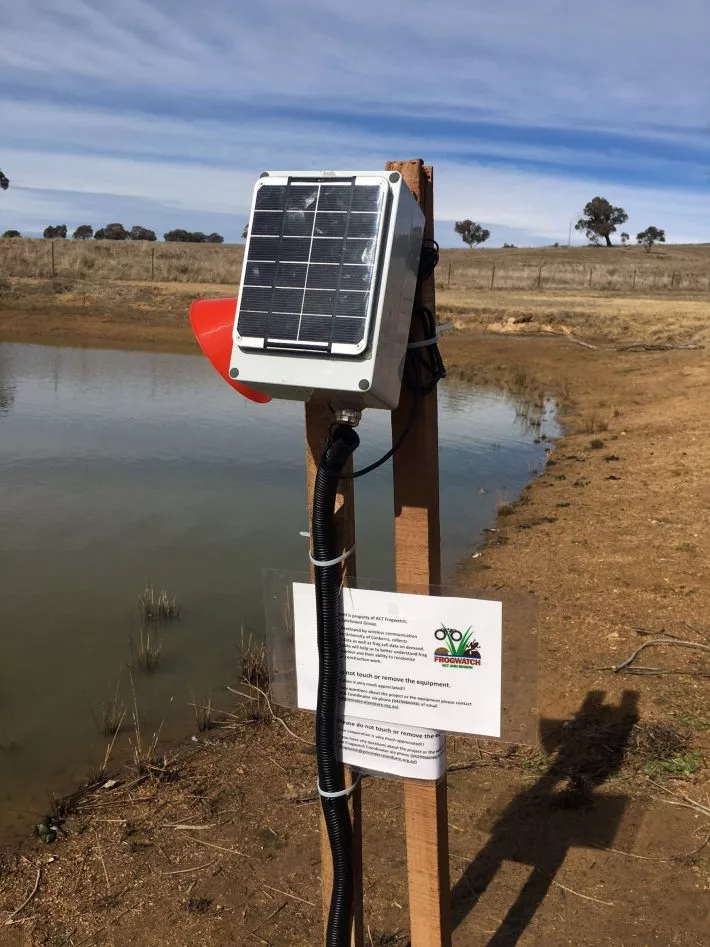Frog population levels are a key indicator of an area's ecological health, and one of the best ways of gauging those levels involves estimating the number of frog vocalizations that are being made at one time. The new FrogPhone could make it easier than ever to do so.
Typically, biologists have to wait around at frog habitats, monitoring the amphibians' croaking up close and in person. Not only is this a hassle logistically-speaking, but the scientists' presence may also frighten the frogs, causing them to remain quieter than usual. That's where the FrogPhone comes in.
Designed to be set up and left unmanned in frog habitats, it was designed by scientists at Australia's University of New South Wales-Canberra and the University of Canberra, in collaboration with the Australian Capital Territory and Region's Frogwatch Program, and the Australian National University.
Along with a microphone, the waterproof monitoring station also incorporates thermal sensors that measure air and water temperatures. It's powered by a high-capacity battery, which is helped out by an integrated solar panel.

Remotely-located users start by simply phoning up the FrogPhone, using their own smartphone. Utilizing 3G/4G cellular mobile data coverage, the device responds in two ways. First, it sends them a text message, indicating the current water and air temperatures along with its battery charge level. Secondly, it lets them actually listen to the area's frog calls in real time. It is estimated that the FrogPhone can detect calls within a radius of 100 to 150 meters (328 to 492 ft).
The technology was successfully field-tested in Canberra from August 2017 to March 2018. Possible future upgrades include multidirectional microphones for covering larger areas, and a satellite communications module for use in areas with poor cellular coverage.
"The FrogPhone will help to drastically reduce the costs and risks involved in remote or high-intensity surveys," says Frogwatch's Anke Maria Hoefer. "Its use will also minimize potential negative impacts of human presence at survey sites. These benefits are magnified with increasing distance to and inaccessibility of a field site."
A paper on the system was published this week in the journal Methods in Ecology and Evolution. And if you're interested in the FrogPhone, you might also want to check out the Australian Acoustic Observatory – once up and running, it will allow online users to eavesdrop on nature sounds from a variety of eco-regions throughout Australia.
Source: British Ecological Society





